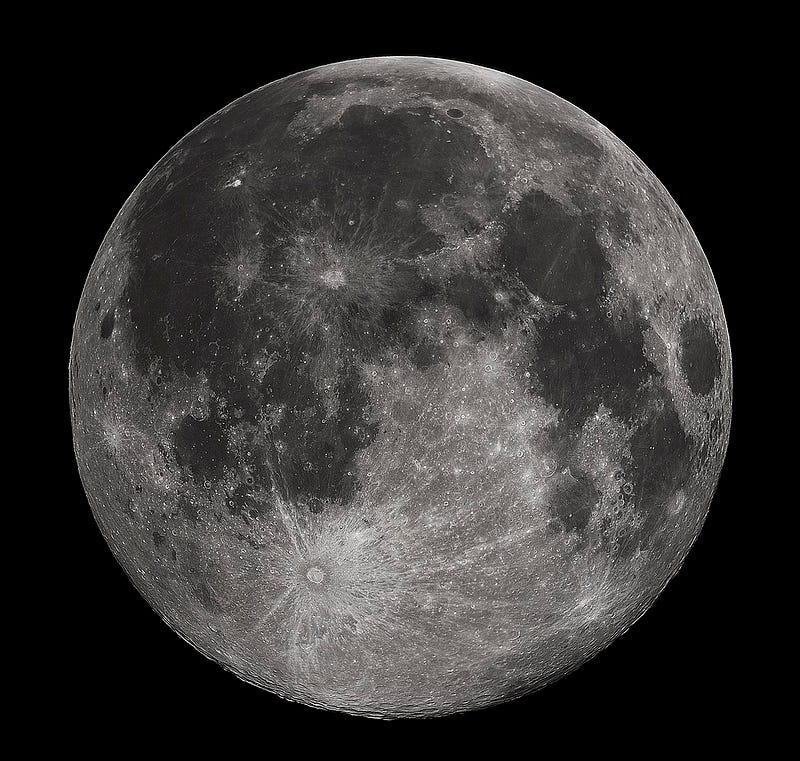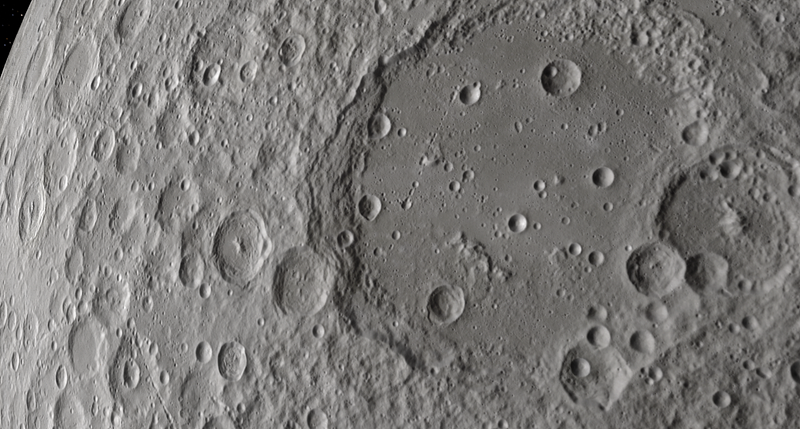Unraveling the Mystery of Lunar Magnetic Anomalies
Written on
Chapter 1: The Enigma of Lunar Magnetic Anomalies
What is the origin of the peculiar magnetic irregularities observed on the Moon? Recent scientific investigations propose a compelling explanation linked to cosmic bombardments.

More than 50 years have elapsed since lunar regolith was first collected and returned to Earth. Remarkably, these samples continue to unveil their secrets. Some of the rocks date back approximately 3 billion years and display evidence of formation under a robust magnetic field. During the Apollo missions, measurements of the Moon's surface magnetic field indicated its presence, albeit weak and variable across different locations. But where does this magnetism originate?
On Earth, a potent magnetic field is generated by a rotating liquid core composed of conductive iron. In contrast, the Moon lacks a liquid nucleus, prompting scientists to propose diverse theories to elucidate the unusual magnetization found in lunar regolith.
Section 1.1: New Insights from Lunar Samples
Recent findings have emerged in the scientific journal Nature Communications, penned by geochemist Zhuang Guo from the Institute of Geochemistry at the Chinese Academy of Sciences. His research team conducted a chemical analysis of lunar soil retrieved by China's Chang’e 5 probe, which returned 1.73 kg of regolith two years ago.
Their studies revealed the presence of minute amounts of magnetite—an iron ore known for its strong magnetic properties—embedded within spherical grains of iron sulfide, resembling small molten droplets.

According to the researchers, magnetite is pivotal in understanding the magnetic anomalies detected on the Moon’s surface. They posited that the formation and distribution characteristics of magnetite could clarify these anomalies. Specifically, they suggested that the magnetite found in lunar samples resulted from asteroid impacts, which created high-pressure and high-temperature conditions conducive to chemical reactions.
Section 1.2: The Impact of Asteroids on the Moon
The Moon’s surface is heavily cratered, a testament to the numerous impacts it has endured. Currently, the International Astronomical Union lists 9,137 recognized craters, over 1,500 of which have been dated. These craters are a defining feature of the Moon's geography.
Chinese researchers speculate that the magnetite was generated through chemical reactions triggered by asteroid collisions. It is hypothesized that these impacts enriched the lunar surface with ferromagnetic materials, which were subsequently transformed into microscopic magnetite particles. Their study indicates that the concentration of magnetite in lunar regolith may be greater than previously thought, potentially elucidating the magnetic anomalies associated with the Moon's surface.
Chapter 2: The Broader Implications of Lunar Research
Video: Do Scientists Have Answers For These Phenomena Seen On The Moon? | LRO 4K Episode 4 - YouTube
This video delves into the scientific inquiries surrounding various phenomena observed on the Moon, including the magnetic anomalies discussed.
Video: Something Weird Is Happening In Earth's Magnetic Field & NASA is Worried - YouTube
This video explores concerns regarding anomalies in Earth's magnetic field, drawing parallels to the findings on the Moon.
In conclusion, as we continue to explore and study lunar materials, we may uncover further insights that not only illuminate the Moon's geological history but also enhance our understanding of magnetic phenomena across celestial bodies.
Did you enjoy this article? Feel free to leave a comment, give some claps, or support my work with a tip. It motivates me to keep creating and sharing engaging content. Follow me for daily updates on new articles. Thank you!